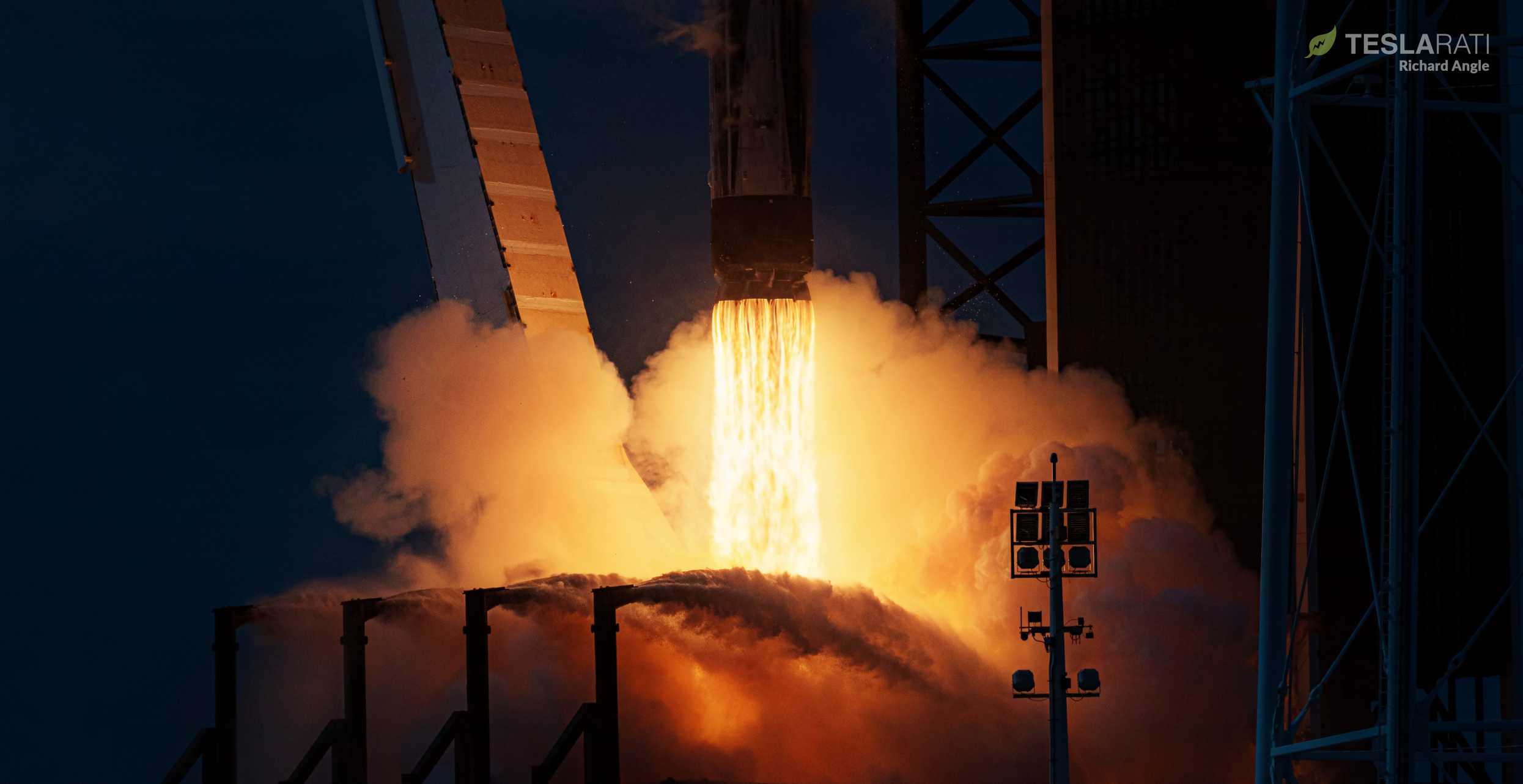
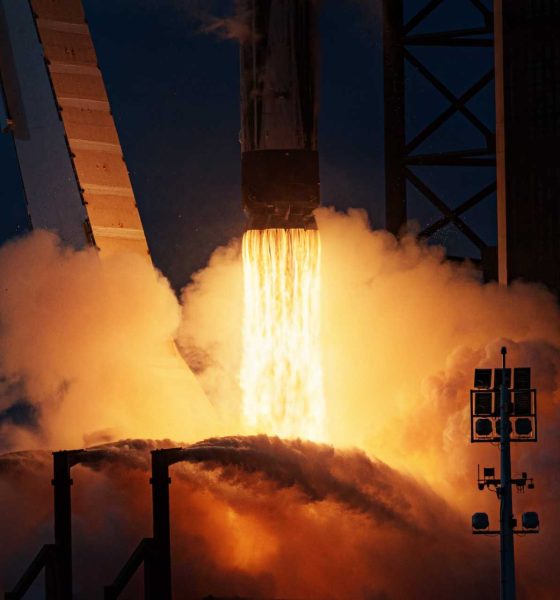
News
SpaceX’s first ever Block 5 booster gives one last hurrah, in photos
After helping SpaceX enter a new era of routine rocket reusability, the very first Falcon 9 Block 5 booster is officially nothing more than bits, pieces, and a few artificial reefs at the bottom of the Atlantic Ocean — intentionally destroyed to give SpaceX the confidence it needs to soon launch astronauts.
Captured on camera by Teslarati photographer Richard Angle, the upgraded Falcon 9 booster was able to give one last spectacular hurrah prior to its even more spectacular demise, returning fire to Kennedy Space Center (KSC) Launch Complex 39A for the first time in more than half a year. Lacking landing legs and grid fins, visible instead as comically stark outlines on the booster’s sooty exterior, Falcon 9 B1046 lifted off for the fourth and final time on January 19th, 2020.
In doing so, B1046 became the third orbital-class booster ever to fly launch four separate missions — a more than fitting end to the first in a line of upgraded Falcon 9 rockets that have brought with them major improvements in reusability and reliability. Nevertheless, a little over 90 seconds after lifting off for the fourth time, Falcon 9 B1046 – left behind after Crew Dragon successfully escaped the (simulated) failing rocket – yielded under intense off-nominal stresses, rupturing the booster’s propellant tanks and creating a vast fireball at least 300 meters (1000+ ft) in diameter.
Powered by nine Merlin 1D engines and capable of producing up to 7600 kN (1.7 million lbf) of thrust, Falcon 9 B1046 was extensively tested at SpaceX’s McGregor, Texas development facilities over a period of two or so months – unusually lengthy. The extra time was used to make sure that the first completed Block 5 booster – representing an almost clean-slate upgrade of the Falcon rocket family – was agreeing with SpaceX’s engineering models and expectations at all points.
The company likely spent several weeks or more performing numerous wet dress rehearsals (WDRs) — filling Falcon 9 B1046’s propellant tanks with liquid oxygen, refined kerosene (RP-1), helium, and nitrogen and verifying that the rocket was structurally sound and functioning smoothly. Once complete, SpaceX moved onto static fire testing, igniting the booster’s M1D engines for increasing periods of time. Finally, the company wrapped up the rocket and shipped it by road from Texas to Florida.
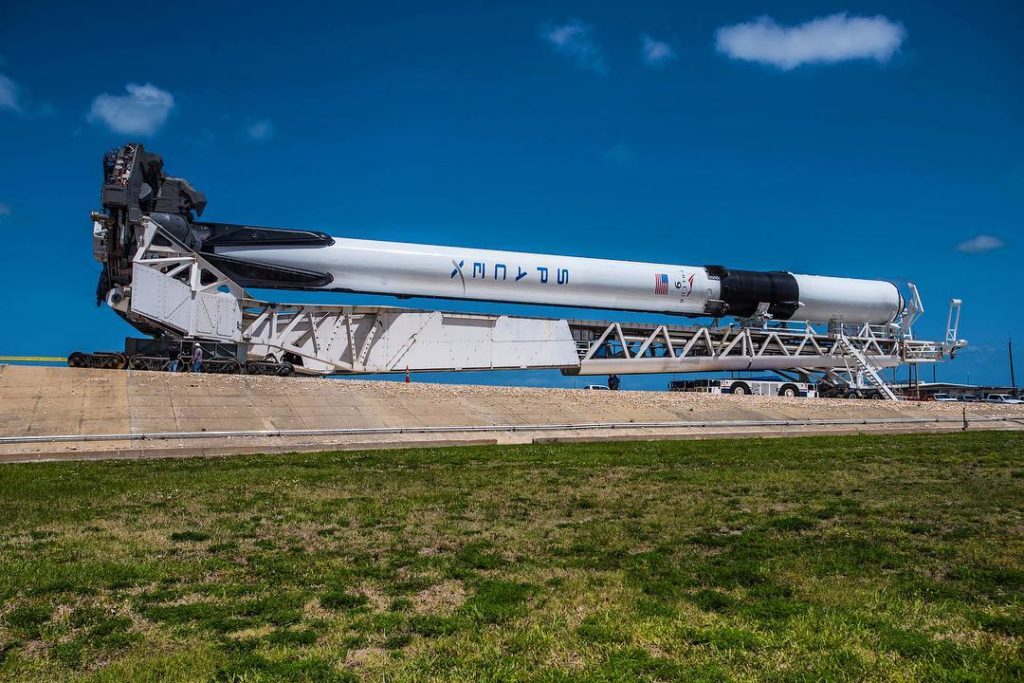
Shortly thereafter, the rocket was quickly prepared for flight and became the first Falcon 9 Block 5 booster to successfully launch and land in May 2018. Over the course of 2018, SpaceX debuted another five Block 5 boosters, while Falcon 9 B1046 became the first Block 5 booster to launch both twice and three times in August and December.
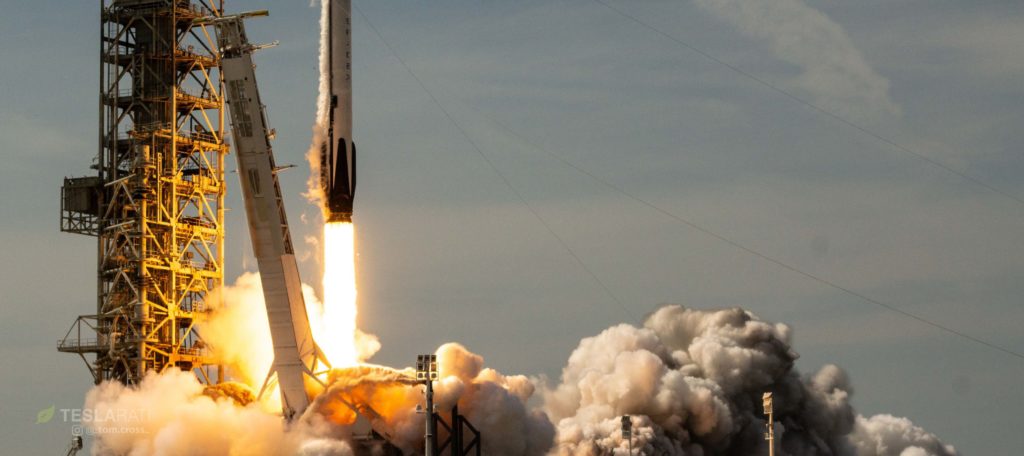
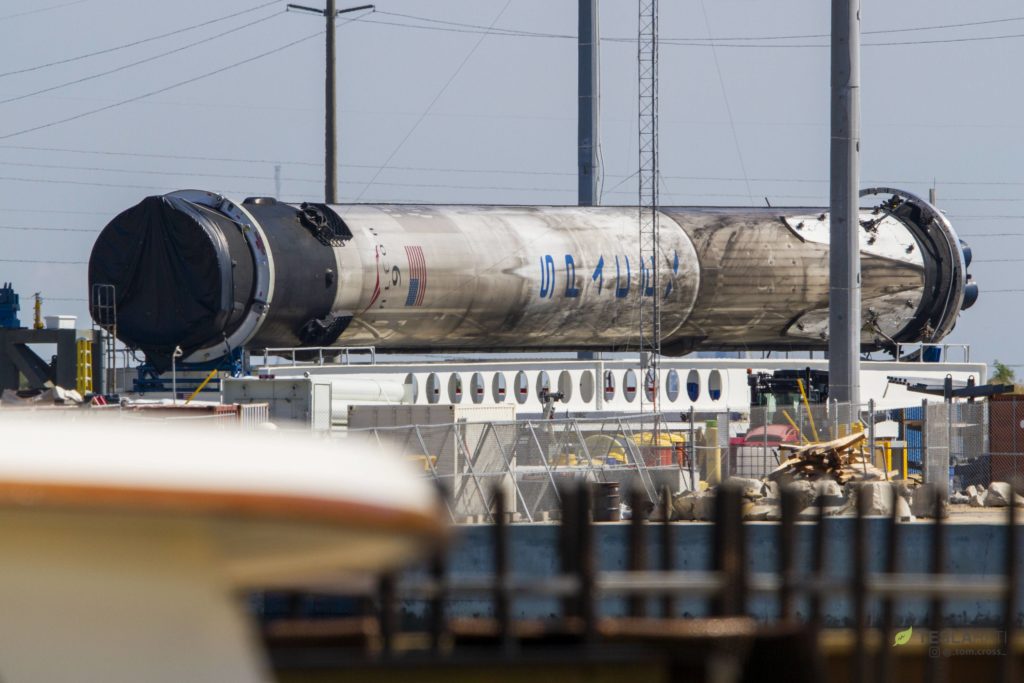
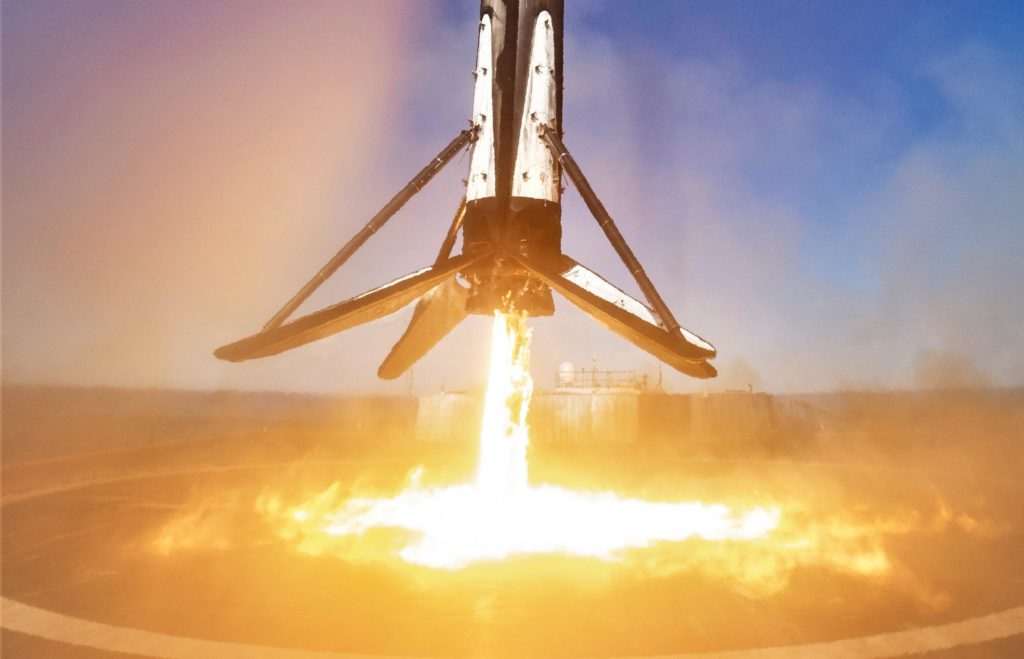
Finally, on January 19th, 2020, Falcon 9 B1046 lifted off for the fourth and last time, becoming the third SpaceX booster to do so in barely two months. Fittingly, B1046’s last launch occurred at Pad 39A, the same launch site it lifted off from for the first time back in May 2018. Carrying an expendable upper stage, Dragon trunk, and Crew Dragon capsule C205, B1046 could not have experienced a more perfect 90 or so seconds of uninterrupted flight. Interrupted, however, it would shortly thereafter become.

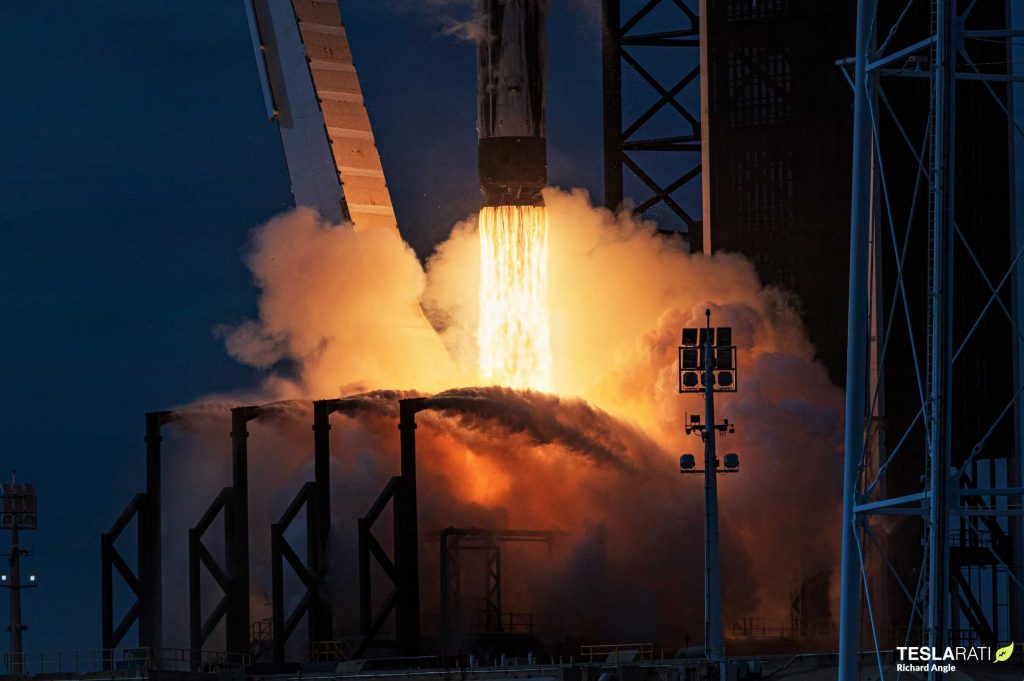
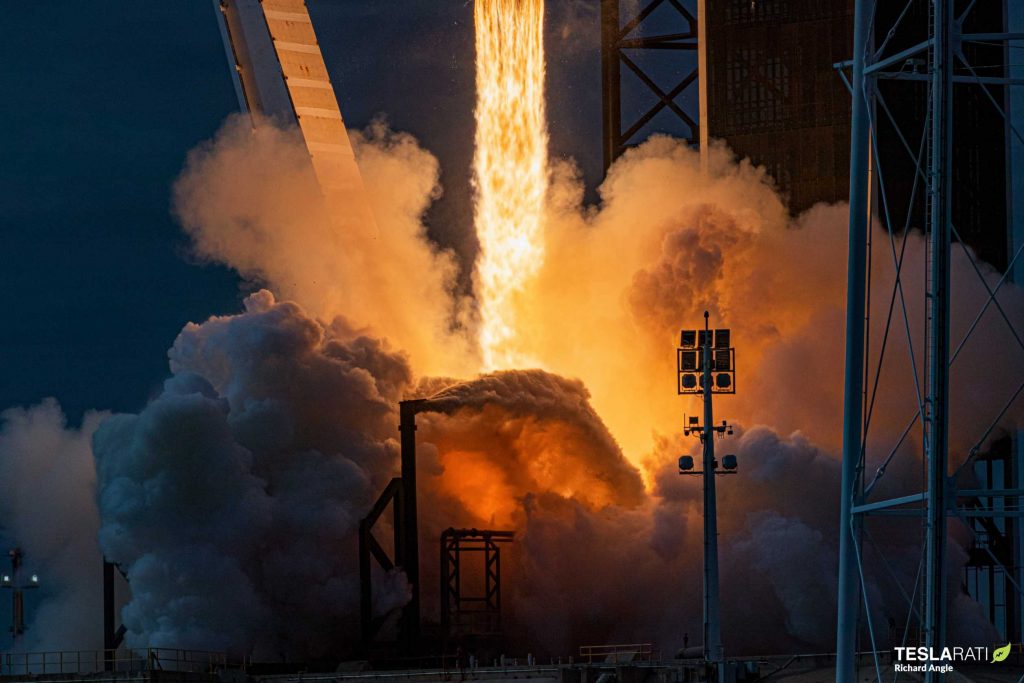
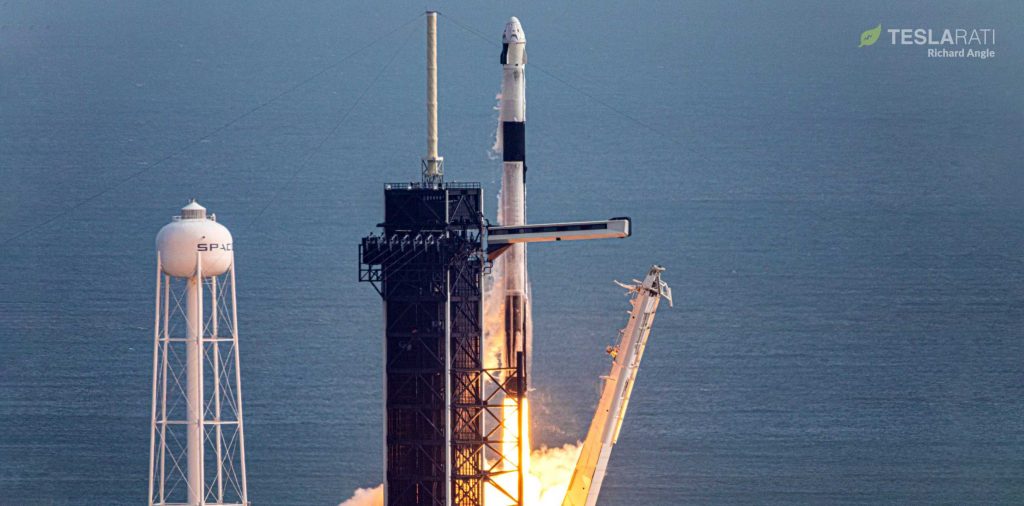
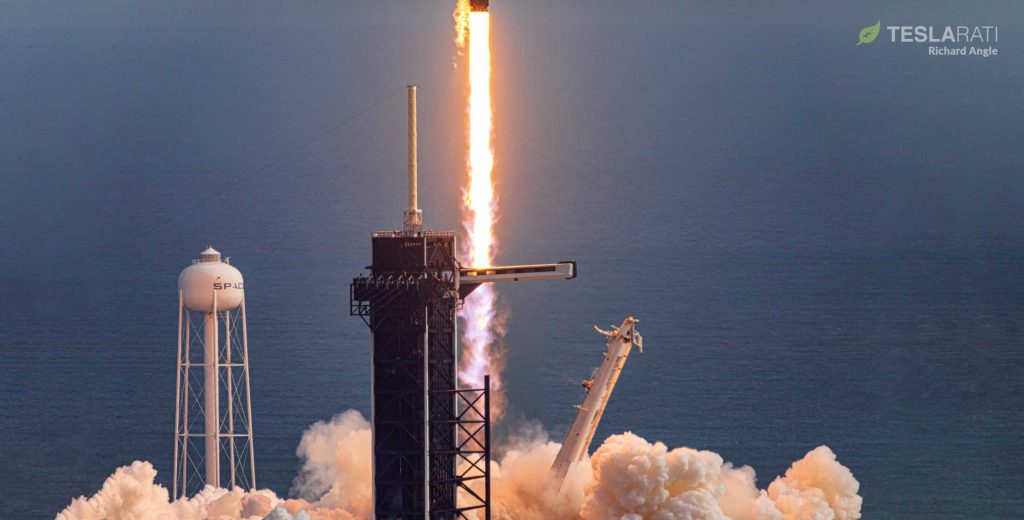
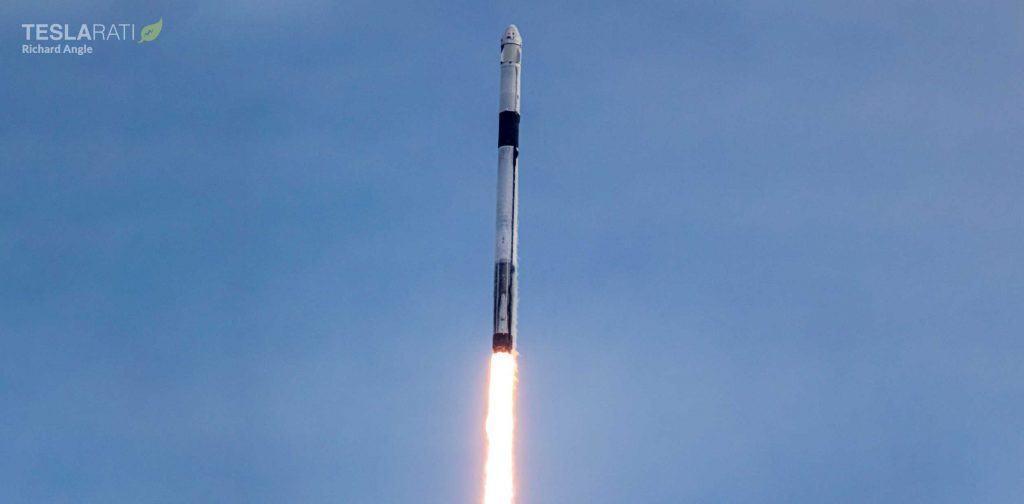
Around 85 seconds after liftoff, Falcon 9 B1046 shut off its Merlin 1D engines at the same time as Crew Dragon C205 ignited eight SuperDraco engines, briskly carrying the spacecraft several thousand feet away in just a handful of seconds. Now fully uncontrolled and rudely interrupted to a supersonic wall of air, B1046 found itself bent and contorted in ways – and under loads – it simply was not designed to survive. Seconds later, the booster’s pressurized propellant tanks were breached, releasing a rapidly dispersing cloud of fuel and oxidizer that almost instantly ignited, creating a fireball the size of several city blocks.
All things considered, not a bad way to go for a well-worn rocket.
Check out Teslarati’s Marketplace! We offer Tesla accessories, including for the Tesla Cybertruck and Tesla Model 3.

News
SpaceX reaches incredible milestone with Starlink program
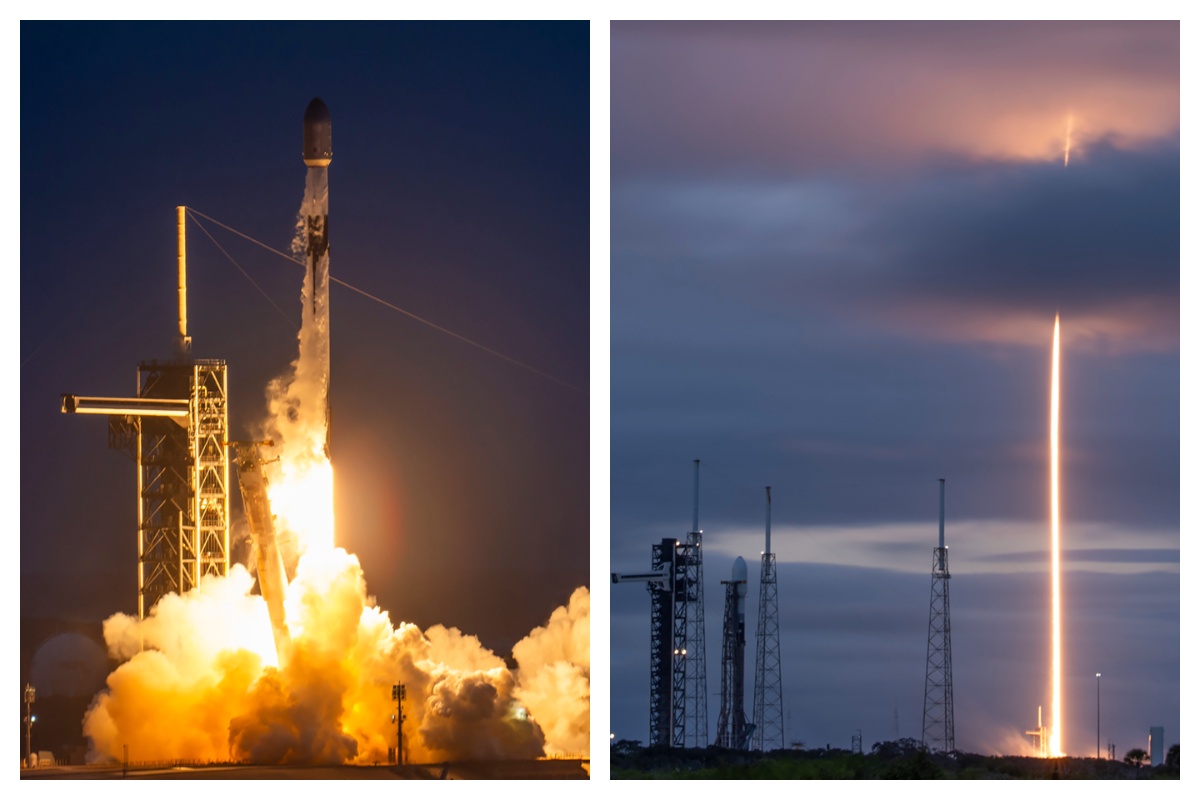
SpaceX reached an incredible milestone with its Starlink program with a launch last night, as the 3,000th satellite of the year was launched into low Earth orbit.
On Monday, SpaceX also achieved its 32nd flight with a single Falcon 9 rocket from NASA’s Kennedy Space Center.
The mission was Starlink 6-92, and it utilized the Falcon 9 B1067 for the 32nd time this year, the most-used Falcon booster. The flight delivered SpaceX’s 3000th Starlink satellite of the year, a massive achievement.
There were 29 Starlink satellites launched and deployed into LEO during this particular mission:
Falcon 9 launches 29 @Starlink satellites from Florida pic.twitter.com/utKrXjHzPN
— SpaceX (@SpaceX) December 9, 2025
SpaceX has a current goal of certifying its Falcon boosters for 40 missions apiece, according to Spaceflight Now.
The flight was the 350th orbital launch from the nearby SLC-40, and the 3,000 satellites that have been successfully launched this year continue to contribute to the company’s goal of having 12,000 satellites contributing to global internet coverage.
There are over five million users of Starlink, the latest data shows.
Following the launch and stage separation, the Falcon 9 booster completed its mission with a perfect landing on the ‘Just Read the Instructions’ droneship.
The mission was the 575th overall Falcon 9 launch, highlighting SpaceX’s operational tempo, which continues to be accelerated. The company averages two missions per week, and underscores CEO Elon Musk’s vision of a multi-planetary future, where reliable connectivity is crucial for remote work, education, and emergency response.
As Starlink expands and works toward that elusive and crucial 12,000 satellite goal, missions like 6-92 pave the way for innovations in telecommunications and enable more internet access to people across the globe.
With regulatory approvals in over 100 countries and millions of current subscribers, SpaceX continues to democratize space, proving that reusability is not just feasible, but it’s also revolutionary.
News
Tesla expands new Full Self-Driving program in Europe
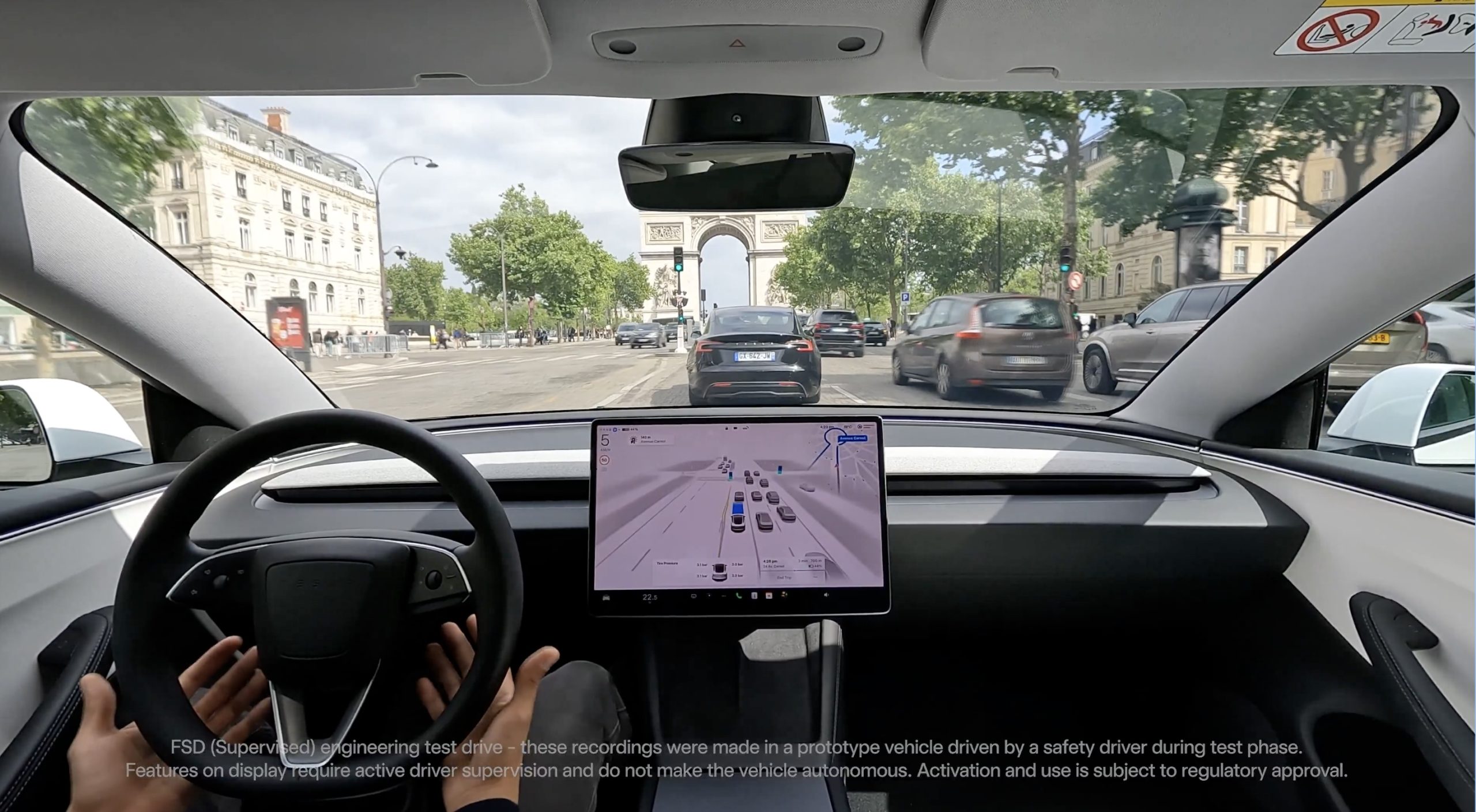
Tesla expanded its new Full Self-Driving program, which gives people the opportunity to experience the company’s suite, in Europe.
Tesla recently launched an opportunity for Europeans to experience Full Self-Driving, not in their personal vehicles, but through a new ride-along program that initially launched in Italy, France, and Germany back in late November.
People could experience it by booking a reservation with a local Tesla showroom, but timeslots quickly filled up, making it difficult to keep up with demand. Tesla expanded the program and offered some additional times, but it also had its sights set on getting the program out to new markets.
It finally achieved that on December 9, as it launched rides in Denmark and Switzerland, adding the fourth and fifth countries to the program.
Tesla confirmed the arrival of the program to Denmark and Switzerland on X:
Now available in Denmark & Switzerland
🇩🇰 https://t.co/IpCSwHO566 https://t.co/V2N5EarLNX
— Tesla Europe & Middle East (@teslaeurope) December 9, 2025
The program, while a major contributor to Tesla’s butts in seats strategy, is truly another way for the company to leverage its fans in an effort to work through the regulatory hurdles it is facing in Europe.
Tesla has faced significant red tape in the region, and although it has tested the FSD suite and been able to launch this ride-along program, it is still having some tremendous issues convincing regulatory agencies to allow it to give it to customers.
CEO Elon Musk has worked with regulators, but admitted the process has been “insanely painful.”
The most recent development with FSD and its potential use in Europe dealt with the Dutch approval authority, known as the RDW.
Tesla says Europe could finally get FSD in 2026, and Dutch regulator RDW is key
Tesla said it believes some regulations are “outdated and rules-based,” which makes the suite ineligible for use in the European jurisdiction.
The RDW is working with Tesla to gain approval sometime early next year, but there are no guarantees. However, Tesla’s angle with the ride-along program seems to be that if it can push consumers to experience it and have a positive time, it should be easier for it to gain its footing across Europe with regulatory agencies.
News
Tesla ramps hiring for Roadster as latest unveiling approaches
Tesla published three new positions for the Roadster this week, relating to Battery Manufacturing, General Manufacturing, and Vision Engineering.
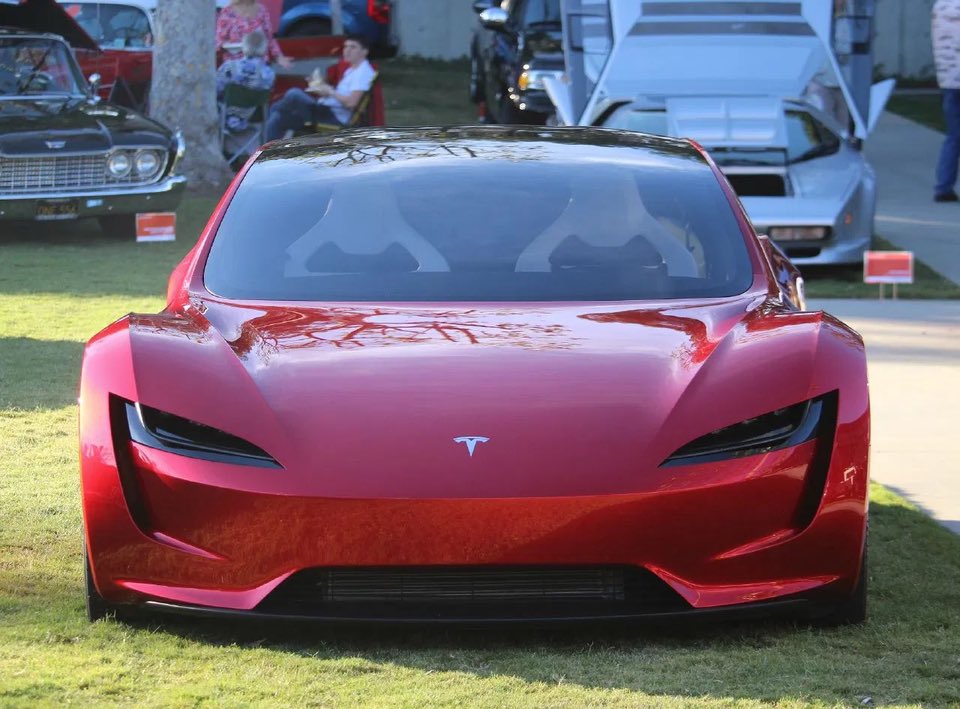
Tesla is ramping up hiring for positions related to the Roadster program, the company’s ultra-fast supercar that has been teased to potentially hover by CEO Elon Musk.
The company seems to be crossing off its last handful of things before it plans to unveil the vehicle on April Fool’s Day, just about four months away.
Tesla published three new positions for the Roadster this week, relating to Battery Manufacturing, General Manufacturing, and Vision Engineering. All three are located in Northern California, with two being at the Fremont Factory and the other at the company’s Engineering HQ in Palo Alto.
Technical Program Manager, Battery Manufacturing
Located in Fremont, this role specifically caters to the design of the Roadster to factory operations. It appears this role will mostly have to do with developing and engineering the Roadster’s battery pack and establishing the production processes for it:
“You will foster collaboration across design engineering, manufacturing, quality, facilities, and production to align with company priorities. Additionally, you will understand project opportunities, challenges, and dependencies; translate scattered information into concise, complete messages; and communicate them to every team member. As the business process development lead, you will develop, maintain, and implement tools and processes to accelerate battery manufacturing execution, achieve cross-functional alignment, and deliver highly efficient systems.”
Manufacturing Engineer, Roadster
Also located in Fremont, this role also has to deal with the concept development and launch of battery manufacturing equipment. Tesla says:
“In this role, you will take large-scale manufacturing systems for new battery products and architectures from the early concept development stage through equipment launch, optimization, and handover to local operations teams.”
Manufacturing Vision Engineer, Battery Vision
This position is in Palo Alto at Tesla’s Engineering Headquarters, and requires the design and scale of advanced inspection and control systems to next-generation battery products:
“You’ll work on automation processes that directly improve battery performance, quality, and cost, collaborating with world-class engineers in a fast-paced, hands-on environment.”
Developing and deploying 2D and 3D vision and measurement systems from proof-of-concept to deployment on high-volume battery manufacturing lines is part of the job description.
Roadster Unveiling
Tesla plans to unveil the Roadster on April 1, and although it was planned for late this year, it is nice to see the company put out a definitive date.
Musk said on the Joe Rogan Experience Podcast in late October:
“Whether it’s good or bad, it will be unforgettable. My friend Peter Thiel once reflected that the future was supposed to have flying cars, but we don’t have flying cars. I think if Peter wants a flying car, he should be able to buy one…I think it has a shot at being the most memorable product unveil ever.”
Production should begin between 12 to 18 months after unveiling, so we could see it sometime in 2027.








